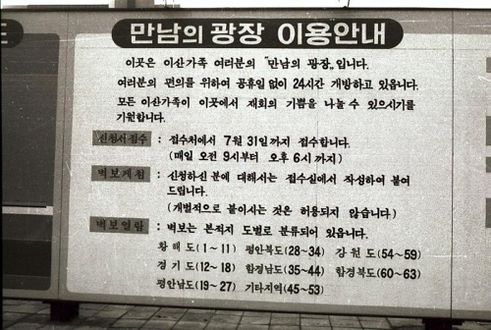The Finding Dispersed Families Campaign
After the end of World War II in August 1945, the armed forces of the United States and the Soviet Union occupied the southern and the northern halves of the Korean Peninsula respectively, dividing Korea along the 38th north latitude parallel line, turning it into a stark example of cold-war confrontation. The Korean War then caused 3 million casualties between 1950 and 1953, and further divided the population. While some families were physically split by the 38th parallel line between South and North Korea, many failed to join other family members on their ways south or north as refugees, or were forced apart by one of the armies.
Many of those who escaped from northern regions during the war lost contact with, and now wished only to find, their relatives who had also come to the south, even though they were not allowed to even anticipate reunion with their kin that they had left behind in the North.
In 1983, the state-run Korea Broadcasting System launched a special live program entitled “Finding Dispersed Families” using its national TV network to mark the 30th anniversary of the armistice agreement. It was first aired at 10 pm on June 30 and lasted for 138 days, using 453 hours of airtime. More than 100,000 applications were received, among which about 50,000 cases were introduced in the program, and 10,189 cases were resolved.
All over the country, people gathered in front of TV sets to watch touching rituals of verification and reunion, and shared their heartbroken tears and joyful tears alike.
The foreign press also covered the stories created from this live campaign with keen interest. Journalists from 25 countries reported the scene of families being reunited on a real-time basis. America’s ABC-TV broadcast live coverage on such families in its renowned ‘Nightline’ news program. This highlighted dispersed Korean families as major international issue and vivid reminder of scars left by the Cold War system.
A North Korean delegation visited the KBS headquarters during their visit to Seoul in May 1985, leading to the groundbreaking first reunion event between dispersed families living in the South and the North in September 1985.
Since then 18,523 Koreans met their long-separated relatives in-person as of 2014, through the intermediation of the Red Cross. Many Koreans wait for the day of unification when a family would never be separated again.

